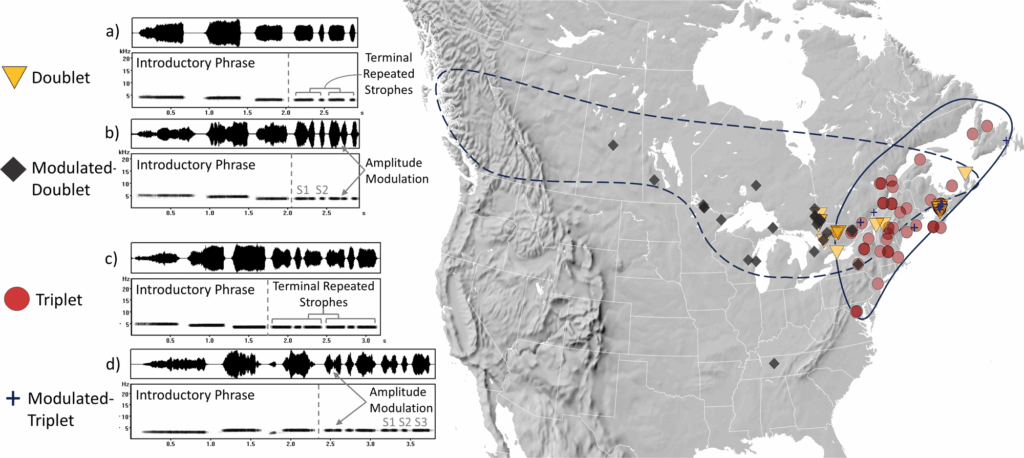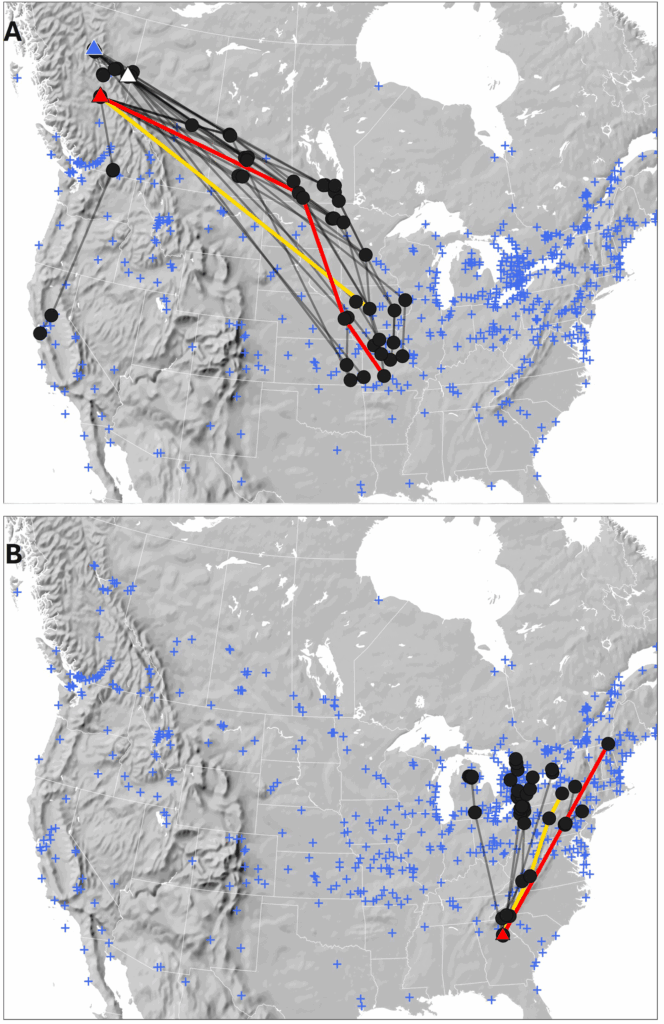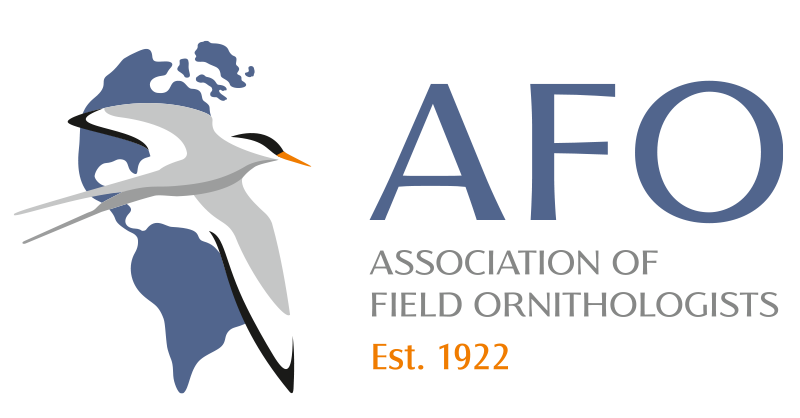
We are glad to present this new section,
where for each new issue of the JFO, one of the journal’s
co-Editors-in-Chief will highlight their favorite paper.
This edition is courtesy of Dr. Rafael Rueda Hernández.
The selected paper was:
“The influence of migratory routes, breeding, and wintering grounds on cultural shifts in song of White-throated Sparrows (Zonotrichia albicollis)” by Joel A. Khoo, Amelia J. MacDonald, Ingebjorg Jean K. Hansen, Cody M. Cox, Scott M. Ramsay and Ken A. Otter (2025, Issue 2, JFO).
Rafael says:
“The techological advances on bird tracking are providing new paths to understanding different aspects through the life cycle of migratory birds. In this sense, this paper provides insights into the cultural evolution of song in White-throated Sparrows by directly linking migration and wintering ground overlap to transmission and evolution of song variants.

Fig. 1. The current distribution of doublet-ending song variants (inclusive of both unmodulated variants described in Ramsay and Otter 2015, and modulated-doublets described by Chartier 2021 and Chartier et al. 2022) in the White-throated Sparrow (Zonotrichia albicollis) breeding range is indicated by the dashed outline. That of triplet-ending songs (including the traditional triplet-ending song described by Borror & Gunn 1965, as well as a modulated-triplet variant described here for the first time) is shown by the solid outline. In the inset to the left are spectrograms/waveforms showing the distinction between the four song variants, highlighting differences in the number of repeating notes in the terminal strophes, as well as amplitude modulations in the S1 note that characterize the modulated song variants. Songs deposited into the Macaulay Library of Sound during 2022 and 2023 were classified to ending variant, and are superimposed on the map as points, represented as inverted triangles (unmodulated doublet-ending), diamonds (modulated-doublet ending), circles (unmodulated triplet-ending), or crosses (modulated-triplet ending). Only songs that could be clearly delineated from online spectrograms (representing high signal-to-noise ratio recordings) as clearly modulated or not, and clearly doublet-ending or triplet-ending were included. Exemplar recordings used for waveform/spectrograms in the figure were from personal recordings (doublet and modulated doublet) or recorded by George Forsyth (unmodulated-triplet – ML587953921) and Laura Sebastianelli (modulated-Triplet – ML581684431).

Fig. 2. (A) Fall migratory movements of White-throated Sparrows (Zonotrichia albicollis) tagged on western breeding grounds in 2022 and 2023. White, red, and blue triangles correspond to sparrows tagged in Dawson Creek, Prince George, and Tsay Keh Dene, British Columbia, Canada, respectively. (B) Spring migratory movements of White-throated Sparrows tagged in an eastern wintering ground (red triangle; near Athens, Georgia) in 2023 and 2024, showing that birds from a common wintering ground disperse toward a broad array of breeding grounds in southeastern Ontario, Quebec, and Atlantic United States/Canada.
The results provided by Khoo et al (2025) validate that cultural traits can spread independently of genetic divergence and that migratory routes act as bridges for cultural evolution, and also raise questions on the long-term effect on mating behavior.”
The results of this study were recently published in the Journal of Field Ornithology:
Khoo, J. A., A. J. MacDonald, I. J. K. Hansen, C. M. Cox, S. M. Ramsay, and K. A. Otter. 2025. The influence of migratory routes, breeding, and wintering grounds on cultural shifts in song of White-throated Sparrows (Zonotrichia albicollis). Journal of Field Ornithology 96(2):9. https://doi.org/10.5751/JFO-00661-960209.
